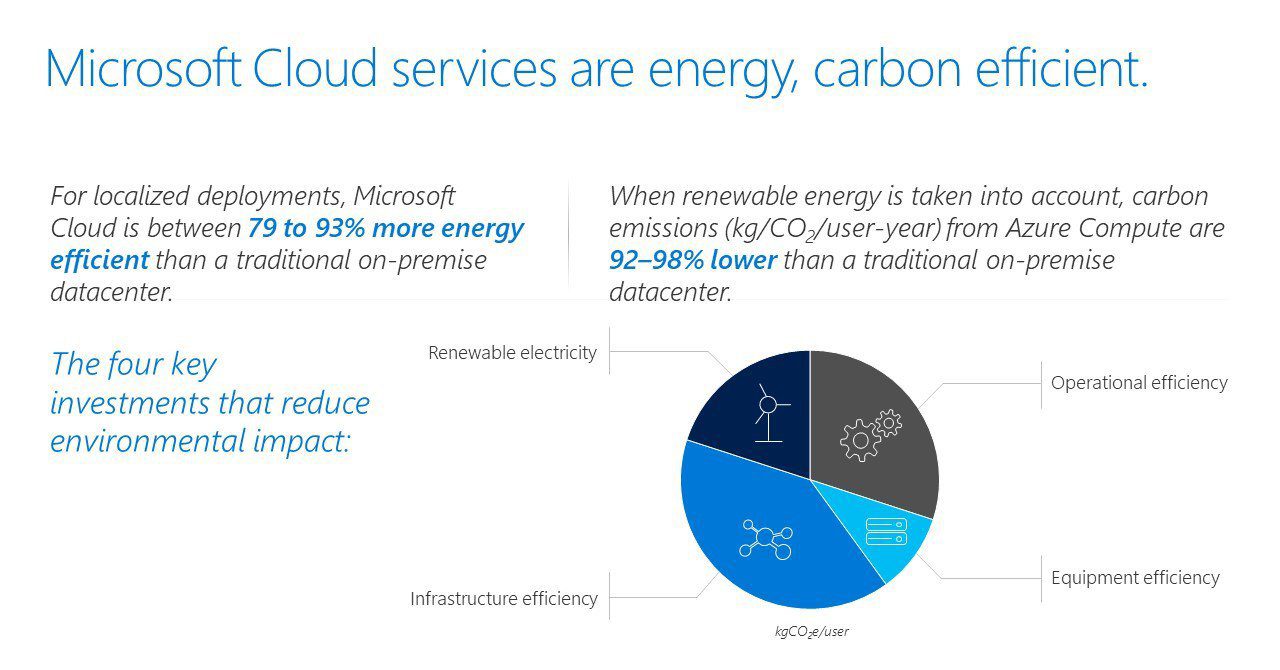Microsoft Cloud services are up to 93% more energy efficient and up to 98% more carbon efficient than traditional enterprise datacenters, according to a new report “The carbon benefits of cloud computing”.
The report issued by Microsoft in partnership with WSP, a leading consultant company, highlights the potential of Microsoft Cloud in reducing the energy and carbon emissions when compared to on-premises datacenters.
 Four cloud applications of Microsoft were considered for the study, which together account for around 50% of the energy consumed in Microsoft datacenters. These applications included Azure Compute, Azure Storage, Exchange Online, and SharePoint Online.
Four cloud applications of Microsoft were considered for the study, which together account for around 50% of the energy consumed in Microsoft datacenters. These applications included Azure Compute, Azure Storage, Exchange Online, and SharePoint Online.

“The world is producing more data than ever, making our infrastructure decisions about how to power this digital transformation incredibly important,” said Brad Smith, president and chief legal officer, Microsoft. “Today’s report confirms what we’ve long believed — that investing in sustainability is good for business, good for customers and good for the planet.”
With the rise in use of cloud computing around the world, the energy consumption in cloud is also increasing. Datacenters in US alone consume around 70 billion kilowatt-hours (kWh) of electricity every year, which is 1.8% of the total electricity consumed in the country.
It is expected that datacenters in US will consume 73 billion kWh of electricity by 2020, which is equal to the energy used by 6 million homes in US per year. It will be a high amount of electricity consumption, and cloud and datacenter providers need to optimize their services.
The key attributes to energy and carbon savings in Microsoft Cloud were the company’s significant investment in IT operational efficiency, IT equipment efficiency, datacenter infrastructure efficiency, and renewable electricity.
Microsoft said that it designed faster and more efficient chips that could do more using less energy, and invested significantly in renewable energy projects in three continents.
Also read: Microsoft and Red Hat bring OpenShift to Azure as a jointly managed service
As per Cisco GCI report, global cloud traffic will nearly triple over the next five years, accounting for 95% of total datacenter traffic by 2021. Hence, Microsoft said that it will continue to measure and manage the environmental impact of its cloud service offerings.








